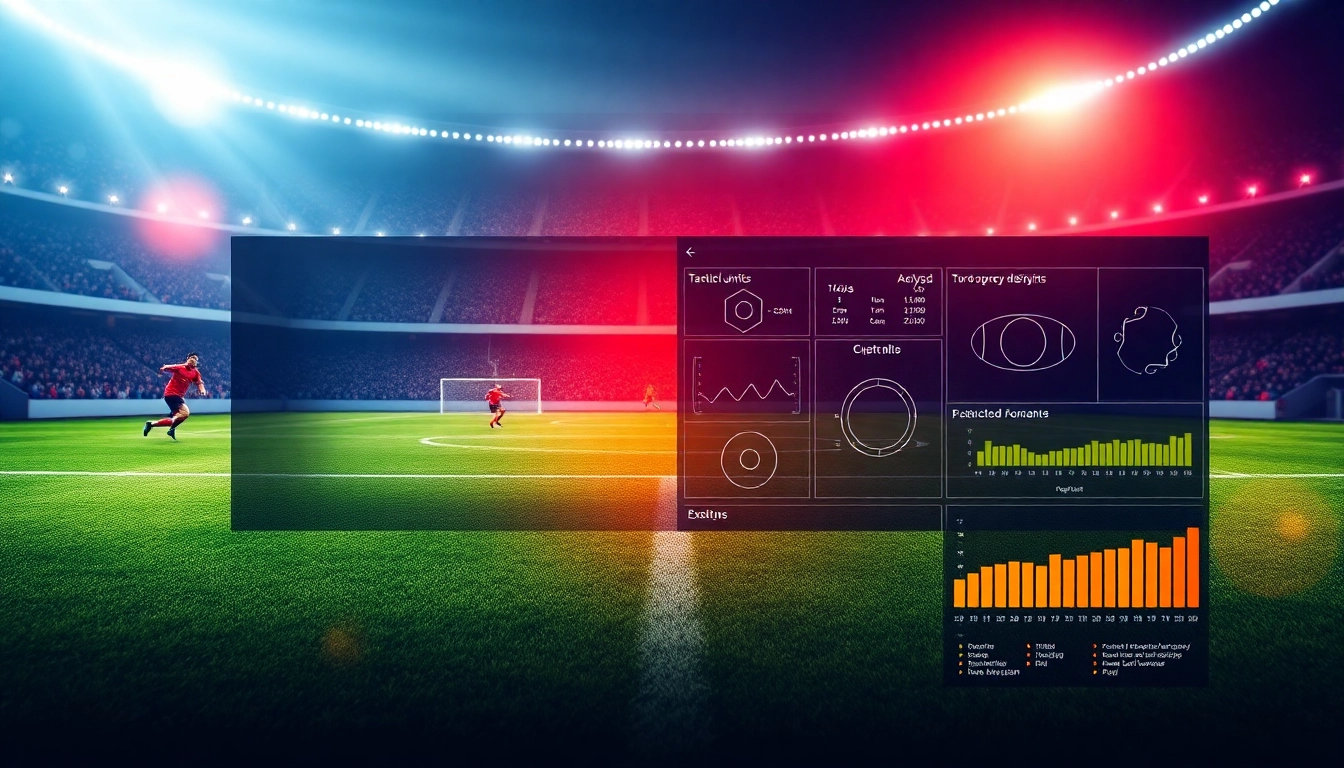Understanding the Fundamentals of Golf Swing Training Aids
What is a Golf Swing Training Aid?
A golf swing training aid is a specialized tool used to assist golfers in improving their swing technique and overall game performance. These aids can range from physical devices like alignment sticks and weighted clubs to digital applications that provide real-time feedback and analysis. By utilizing a golf swing training aid, players can address specific flaws in their swings, enhance muscle memory, and develop better consistency on the course.
How Training Aids Improve Swing Technique
Training aids operate on the principle of feedback and correction. When a golfer uses a training aid, they receive immediate feedback regarding their swing mechanics, allowing them to make adjustments in the moment. Many aids are designed to isolate certain aspects of the swing, such as grip, takeaway, or follow-through. This targeted approach ensures that golfers can focus on improving one element at a time, leading to a more effective and controlled swing overall.
Common Features of Effective Training Devices
Effective training aids typically share several key features that enhance their usability and effectiveness:
- Adjustability: Many quality aids can be adjusted to accommodate different body types and swing styles.
- Portability: Compact and lightweight designs allow golfers to easily transport their aids to the driving range or course.
- Durability: Well-built aids withstand repeated use, ensuring longevity and reliability.
- Instructional Material: Comprehensive guides or tutorials often accompany training aids, providing users with insights on how to maximize their benefits.
Types of Golf Swing Training Aids
Physical Aids for Mechanics Improvement
Physical golf swing training aids are tangible products designed to improve various mechanics of the golf swing. These include:
- Alignment Sticks: Used to help golfers visualize their stance and alignment, ensuring that they are set up correctly for their swings.
- Weighted Clubs: These aids increase resistance during practice swings, helping to build strength and control in the swing.
- Swing Trainers: Devices that provide feedback on swing path and impact position, allowing users to make necessary adjustments.
Digital Tools for Real-Time Feedback
In contrast to physical aids, digital tools employ technology to provide golfers with immediate feedback on their performance. Popular digital training aids include:
- Mobile Applications: Apps that utilize video analysis or sensor data to track swing mechanics and offer tailored advice.
- Launch Monitors: High-tech devices that analyze swing speed, launch angle, and other critical metrics to provide detailed insights into a player’s performance.
- Wearable Technology: Devices worn during practice that track biomechanics and give data-driven feedback on the user’s swing.
Comparative Analysis of Popular Training Products
With so many training aids available in the market, it’s essential to compare popular products to find the most effective options. Here are a few noteworthy examples:
| Product | Type | Key Features | Price Range |
|---|---|---|---|
| SKLZ Gold Flex | Physical | Strength and flexibility training with a weighted club | $40 – $50 |
| FlightScope Mevo | Digital | Portable launch monitor that tracks swing metrics | $399 – $499 |
| SuperSpeed Golf | Physical | Speed training system to improve swing speed | $199 – $249 |
| Golf Ski Trainer | Physical | Helps develop a better swing plane | $149 – $199 |
Choosing the Right Golf Swing Training Aid for Your Needs
Assessing Your Skill Level and Goals
When selecting a golf swing training aid, it’s crucial to assess your current skill level and specific goals. Beginners might benefit from aids that focus on grip and stance, while experienced players may seek tools for advanced swing analysis and optimization. Establishing clear goals such as reducing handicap or increasing swing speed can guide your decision-making process.
Key Considerations When Shopping
Here are some essential factors to consider when choosing a golf swing training aid:
- Budget: Determine how much you are willing to spend and find aids that fit within that range.
- Usefulness: Prioritize aids that directly address your weaknesses or specific areas of improvement.
- Ease of Use: Select aids that you find intuitively easy to handle and incorporate into your practice routine.
- Portability: Consider whether the aid can be easily transported to practice venues.
User Reviews and Ratings Insights
Taking the time to read user reviews and ratings can provide invaluable insights into the effectiveness of a training aid. Look for feedback that highlights specific strengths or weaknesses, how it performed in real-world conditions, and whether users achieved their desired outcomes. Websites and forums dedicated to golf equipment are excellent sources for this information.
Incorporating Golf Swing Training Aids into Your Practice Routine
Effective Techniques for Maximizing Results
Incorporating training aids into your practice routine requires intention and strategy. Here are techniques to maximize their effectiveness:
- Dedicated Sessions: Allocate specific practice sessions focused solely on using training aids.
- Variety: Experiment with different aids to address multiple aspects of your swing.
- Structured Drills: Design drills around your training aids to reinforce good habits and establish muscle memory.
- Partner Practice: Work with a friend or coach using training aids for additional feedback and motivation.
Setting Realistic Goals and Metrics
To truly benefit from your training aids, set realistic goals along with measurable metrics to track progress. These could include improvements such as:
- Increased swing speed measured through a launch monitor.
- Better shot dispersion as tracked during practice rounds.
- Lower scores as a result of improved techniques.
Tips for Assessing Progress with Training Aids
Regularly assess your progress to ensure that your practice is yielding tangible results. Here are some tips:
- Video Analysis: Record your swings periodically to visually track improvements and areas needing focus.
- Swing Metrics: Use technology such as launch monitors to quantify your development.
- Journal Progress: Keep track of your practice sessions, noting what training aids were used and the resulting outcomes.
Real-World Success Stories with Golf Swing Training Aids
Case Studies: Amateur to Pro Transitions
Many amateur golfers have made significant improvements in their game through the strategic use of training aids. For example, a former high school golfer with a mid-handicap of 15 utilized a weighted club to strengthen their swing. After several months of focused practice, they transitioned to a single-digit handicap, showcasing the profound impact of targeted training aids.
Impact on Professional Players’ Techniques
Professional golfers also benefit from training aids, often incorporating them into their routines for competitive advantage. Many top players employ swing analysis software and training devices to fine-tune their techniques and maintain performance under pressure. For instance, renowned PGA Tour players have shared how technologies such as launch monitors have helped them refine their fine motor skills and achieve greater consistency in their play.
Community Feedback and Testimonials
The golfing community often shares firsthand experiences with various training aids, providing invaluable feedback that can guide others in their purchasing decisions. Various online forums, social media groups, and review sites highlight testimonials from golfers who have improved their games and offer genuine insights into the utility and effectiveness of different products.



